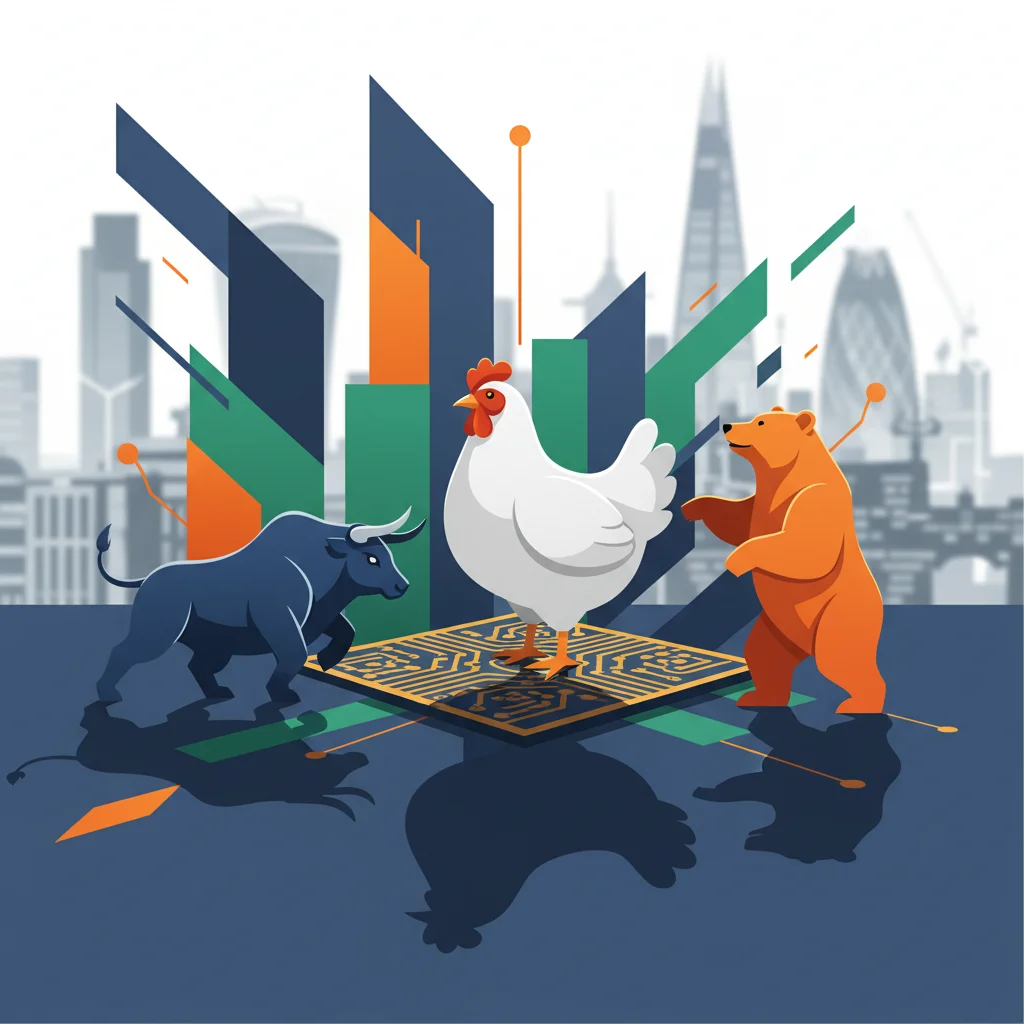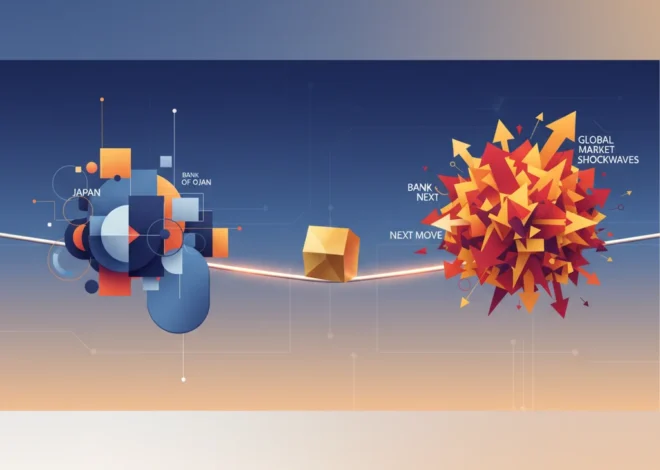
Beyond the Bull and Bear: Lessons from the Chicken on the Trading Floor
In the heart of London’s financial district, a world dictated by algorithms, billion-dollar transactions, and the relentless hum of the global economy, an event of profound unlikeliness occurred. A chicken, affectionately named Henrietta, found her way onto a trading floor and, in a moment of beautiful absurdity, laid an egg. This delightful anecdote, highlighted in a letter to the Financial Times by Henrietta Dermot (source), is more than just a charming news snippet. It’s a cracked-open window into the soul of modern finance.
For investors, finance professionals, and business leaders accustomed to dissecting quarterly earnings reports and complex market indicators, the story of a hen in the house of capital might seem trivial. Yet, this single, organic act of production in a bastion of abstract value serves as a powerful metaphor. It forces us to confront the evolution of our financial systems, the inherent unpredictability of any market, the growing disconnect between the real and financial economies, and the enduring, often overlooked, human element at the core of it all. Henrietta didn’t just lay an egg; she hatched a conversation about where the world of finance has been and, more importantly, where it is heading.
The Trading Floor: A Relic of a Bygone Era?
Henrietta’s choice of nesting spot—a physical trading floor—is itself a poignant symbol. For decades, the trading floor was the epicenter of the financial universe. It was a physical arena of organized chaos, where fortunes were made and lost through a flurry of hand signals, shouts, and paper tickets. This “open outcry” system was deeply human, driven by instinct, relationships, and the raw energy of the crowd. It was a place where you could literally feel the pulse of the stock market.
Today, that world is all but extinct. The rise of financial technology, or fintech, has replaced the cacophony of the trading pit with the silent, cold efficiency of servers. High-frequency trading algorithms now execute millions of orders in the time it takes a human trader to blink. According to a report, algorithmic trading is estimated to account for around 60-73% of the overall United States equity trading in recent years. The trading floor has been digitized, decentralized, and dematerialized.
Henrietta’s presence on one of the few remaining floors feels like a visit from a ghost of the past—a creature of flesh and blood in a domain that has become increasingly virtual. It underscores a fundamental shift in the industry. The skills required to succeed are no longer about having the loudest voice in the pit but about understanding quantitative analysis, coding, and data science. The transition from human-centric to machine-driven finance is nearly complete.
To fully appreciate this transformation, consider the fundamental differences between these two worlds:
| Feature | Traditional Trading Floor | Modern Electronic Trading |
|---|---|---|
| Environment | Physical, loud, high-energy, face-to-face | Virtual, quiet, server-based, screen-to-screen |
| Execution Speed | Seconds to minutes | Microseconds to milliseconds |
| Key Skills | Voice projection, hand signals, intuition, relationships | Quantitative analysis, programming, data science, risk modeling |
| Primary Actors | Human brokers and traders | Algorithms, AI, and quantitative analysts |
| Accessibility | Exclusive, limited to floor members | Global, accessible to anyone with a connection |
Henrietta, in her simple, analogue existence, reminds us of what has been lost in this transition: the raw, tangible, and sometimes messy humanity of the marketplace.
The Price of a Masterpiece: Unpacking the Economics of Basic Income for Artists
The Search for Soul in a Quant-Driven World
While technology has driven efficiency, it has also fostered a sense of detachment. Finance can often feel like a sterile, numbers-only game, disconnected from the real-world businesses and human lives it impacts. The story of the trading-floor chicken cuts through that sterility. It’s a reminder that even in the most high-stakes environments, there is room for the unexpected, the humorous, and the human.
This anecdote arrives at a time when the financial industry is undergoing a significant cultural reckoning. The “greed is good” ethos of the 1980s is being challenged by a new generation of professionals and investors who demand more than just profit. The rise of ESG (Environmental, Social, and Governance) investing is a testament to this shift. Investors are increasingly allocating capital to companies that demonstrate ethical practices, environmental responsibility, and good corporate governance. It’s a movement that attempts to re-inject a moral and human dimension into the cold calculus of capital allocation.
The story of Henrietta resonates with this movement. It’s a moment of organic, unpredictable life amidst the structured, inorganic world of derivatives and securities. It represents a crack in the façade of pure rationality, a sign that the culture of banking and finance may be slowly evolving to embrace a more holistic and, dare we say, humanistic perspective.
Henrietta as a Black Swan: Embracing Radical Uncertainty
In his seminal work, Nassim Nicholas Taleb introduced the concept of the “Black Swan”—an event that is a complete surprise, has a major effect, and is often inappropriately rationalized after the fact with the benefit of hindsight. While a chicken laying an egg may not crash the global economy, it is, in its own small way, a perfect black swan for the traders on that floor. No risk model, no economic forecast, no chart analysis could have ever predicted it.
This is Henrietta’s most profound lesson for anyone involved in the world of investing. We build sophisticated models and complex algorithms to predict market movements and manage risk. We analyze historical data to forecast future performance. Yet, the financial world is constantly blindsided by events that lie outside these models: the 2008 financial crisis, a global pandemic, a sudden geopolitical conflict. These are the true black swans that define market history. A recent study by the Bank for International Settlements highlights how major, unforeseen shocks have repeatedly challenged the stability of the global financial system (source).
Henrietta’s appearance is a humble reminder of the limits of our knowledge and the hubris of assuming we can model all possibilities. It teaches us that the most robust investment strategies are not those that claim to predict the future, but those that are built to withstand its inherent unpredictability. A truly diversified portfolio and a mindset that embraces uncertainty are more valuable than any single predictive tool. The market, like nature, is a complex adaptive system, and it will always find ways to surprise us.
Geopolitical Chess at COP30: How Brazil's Climate Diplomacy is Reshaping Global Finance
A Fable in an Eggshell: The Real vs. The Financial Economy
Finally, let’s consider the object at the center of this story: the egg. An egg is a product of the real economy. It is tangible, nourishing, and a fundamental unit of agriculture and commerce. The trading floor, by contrast, is the heart of the financial economy—a world of abstract instruments like stocks, bonds, and derivatives that represent claims on future value.
For decades, these two economies have become increasingly detached. The stock market can soar while wages stagnate and small businesses struggle. Financial instruments of dizzying complexity are traded, creating wealth seemingly out of thin air, far removed from the production of actual goods and services. Henrietta’s act of laying a real, tangible egg on the floor where abstract value is traded creates a striking juxtaposition. It’s a collision of two worlds.
This collision is a focal point of many modern financial innovations. Technologies like blockchain aim to create more transparent and direct links between assets and their real-world counterparts through tokenization. Decentralized Finance (DeFi) seeks to rebuild financial systems from the ground up, ostensibly to be more open and less reliant on the traditional intermediaries that dominate the current system. These movements, at their core, are a response to the perceived opacity and disconnect of the mainstream financial world.
Henrietta’s egg, in its beautiful simplicity, serves as a grounding force. It reminds us that all the financial abstraction in the world is ultimately, or at least should be, tethered to the real economy—the world of factories, farms, innovation, and human labor. When finance loses that connection, it risks becoming a self-perpetuating game that is of little use to society as a whole.
The Epstein Files Unsealed: A Black Swan Event for Wall Street and the Global Economy?
The Ultimate Takeaway
The story of Henrietta, the chicken who graced a London trading floor, is far more than a quirky anecdote. It is a Rorschach test for the modern financial professional. In it, we can see the ghost of the past and the shadow of the future. We see the tension between human intuition and artificial intelligence, between tangible value and abstract wealth, and between predictable models and a chaotic, unpredictable reality.
It teaches us that in our pursuit of sophisticated fintech solutions and ever-more-complex economics, we must not forget the basics. We must build systems that are resilient to surprise. We must foster a culture that values more than just the bottom line. And we must never forget that the entire edifice of global finance is, at its foundation, a human construct, designed to serve the real-world economy. Sometimes, it takes a chicken to remind us of that.


